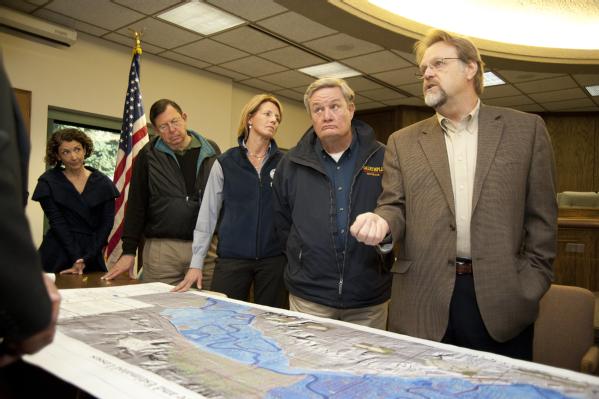Debby Update 3: Preparing for flooding
Posted by: Lars Anderson, Director, Public Affairs
We’re continuing to monitor Tropical Storm Debby as it continues to create dangerous conditions along much of the Gulf Coast. According to the National Hurricane Center’s forecast at 5 p.m. Eastern time today, Debby is expected to bring large amounts of rain to affected areas – especially northern and central Florida, southeast Georgia, and coastal South Carolina. In some areas, over 15 inches of rain is expected this week.
June 25 - National Hurricane Center projected rain totals for the next three days. Image originally inserted as of 5 p.m. Eastern time.
At this time, Debby’s biggest threat for those in the affected area is flooding. Make sure you’re staying up to date with your local weather forecast and taking precautions to stay safe in case of flooding. Here are few safety tips if you are in Debby’s projected path:
- If you have to leave your home, do not drive through flood waters. Even a small amount of moving water can cause you to lose control of your vehicle. And if you see standing water on the roadway, do not try to drive through it. * Turn around, don’t drown *
- Keep up with updates from your local officials. If they give the order to evacuate, do so immediately. Remember, evacuation orders come from local officials, not FEMA.
- Severe weather watches and warnings may happen quickly, so be familiar with flood terminology, like:
- Flood Watch - Flooding is possible. Tune in to NOAA Weather Radio, commercial radio or television for information.
- Flood Warning - Flooding is occurring or will occur soon; if advised to evacuate, do so immediately.
- Flash Flood Watch - Flash flooding is possible. Be prepared to move to higher ground; listen to NOAA Weather Radio, commercial radio or television for information.
- Flash Flood Warning - A flash flood is occurring; seek higher ground on foot immediately.
- Find more on how to keep your family, home, or business safe from the effects of a tropical storm at Ready.gov/hurricanes
What we’re doing
We continue to closely monitor tropical storm Debby at our offices in Atlanta, Denton, Texas, and Washington, D.C. Our staff is in close contact with state officials in potentially affected states including Florida, Georgia, Mississippi, Alabama and South Carolina. In Florida, a FEMA liaison officer is onsite at the Florida Emergency Operations Center, after being requested by the state, to help coordinate if additional support is needed.
While we will continue to provide tropical storm Debby updates through our blog, Facebook page, and Twitter accounts – the best place to get up-to-date information is from the National Hurricane Center, at:
- Their website: www.hurricanes.gov or hurricanes.gov/mobile on your phone
- Their Facebook page
- Their Twitter account, @NHC_Atlantic







